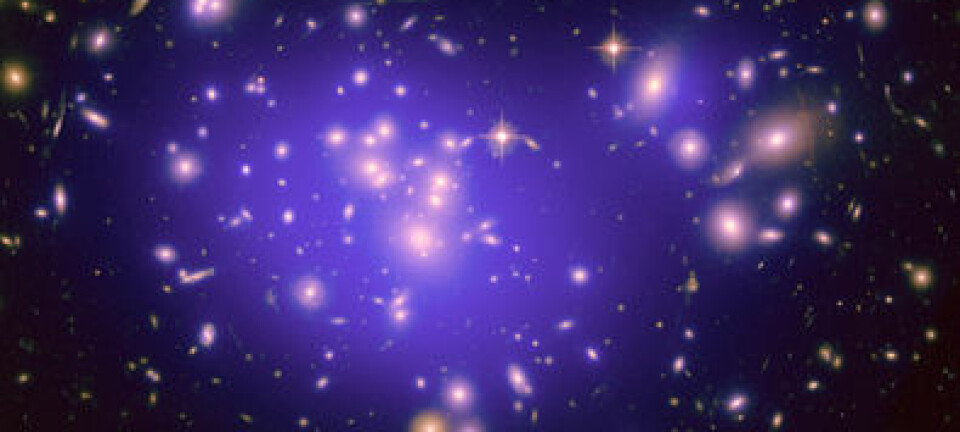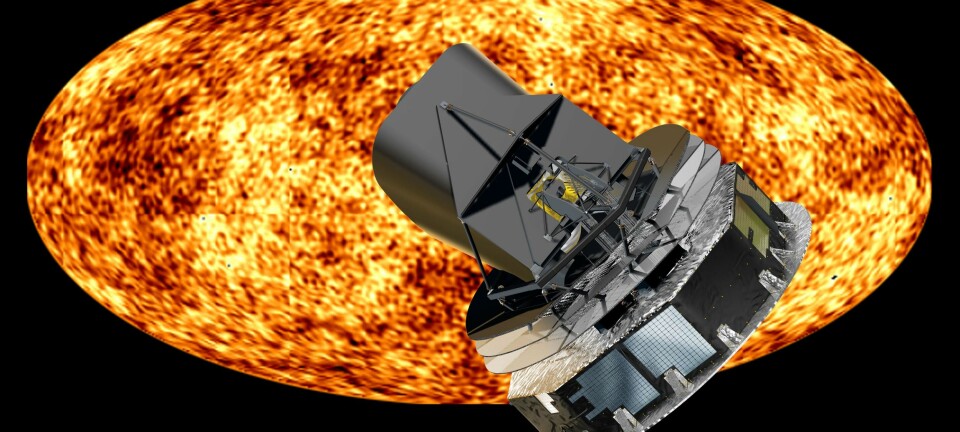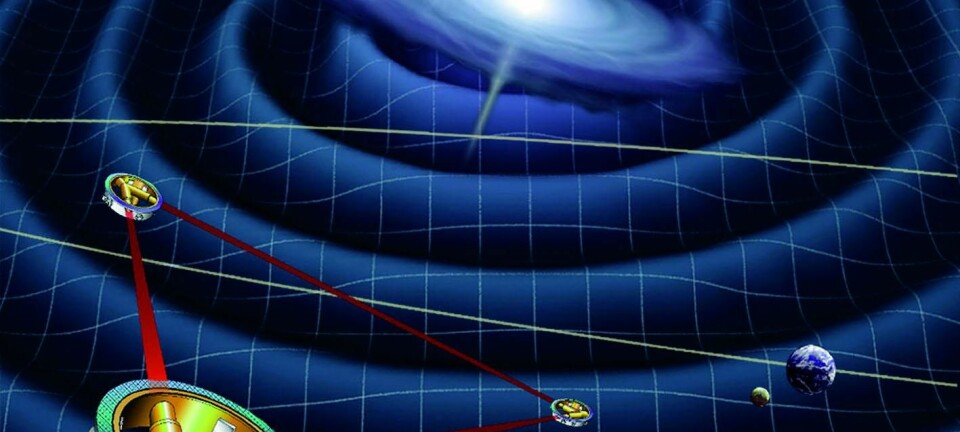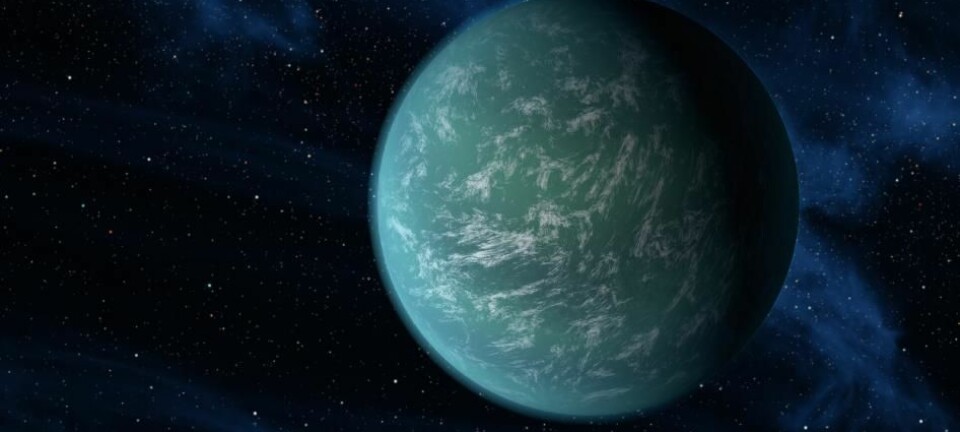
Einstein to shed light on black holes
Danish scientists are trying to unify Einstein’s theory of relativity with quantum mechanics to find out how the universe came into existence.
Every single atom in your body was at one point created in the early universe, for example in supernova explosions – the first atoms being hydrogen atoms, which were presumably created soon after the Big Bang.
This, at least, is the best explanation physicists have come up with so far. Exactly how the universe was created and how it evolved in the very first nanoseconds remains a mystery.
To understand the creation of our universe, we need to unify Einstein’s general theory of relativity and quantum mechanics. This is something that physicists have tried to do for the past 40 years, using various approaches, each of them having their successes and failures
But now a research team from Copenhagen University’s Niels Bohr Institute has come up with a concrete framework for how this can be done.

They are currently testing mathematical models which can gel the theories into one, and thereby contribute to our understanding of the Big Bang and black holes.
The difference between gravity and quantum mechanics
According to the theory of relativity, gravity is the fundamental force that keeps the universe together. The theory explains how gravity is a manifestation of the curvature of space and time and enables us to understand the evolution of the universe. This is macroscopic classical physics, where speeds, directions and positions can be measured and calculated.
This theory is, however, inadequate when it comes to tiny distances at the atomic level. This micro-world is ruled by quantum mechanics.
In quantum mechanics, most changes occur in leaps and cannot therefore be measured in the same way as in classical physics.

In our everyday lives, it is of little importance that we cannot measure things accurately down to Planck length (10-35 metres) – which is a length scale established by the German physicist Max Planck, where the classical notions of space and time break down.
But if we are to fully understand astronomical phenomena such as the Big Bang and black holes – which involve extremely high energy and distances so small that quantum mechanics becomes important – we need to expand the theory of relativity. We need to find a so-called quantum-gravitational theory.
“We need to figure out exactly what happened when our universe came into being,” says Professor Jan Ambjørn, one of researchers behind the study.
”Maybe this is only one out of many universes. Lots of theories have been presented over the years, but it’s never been possible to test them.”
Computer simulations confirm new theory
A couple of years ago, Ambjørn and his colleagues Jerzy Jurkiewicz of the Polish Jagiellonian University and Renate Loll of Utrecht University in Holland formulated a theory on how the two aspects could be brought together.
Unlike previous theories in this field, this theory led to the creation of concrete computer simulations of tiny ‘quantum universes’ – something that other theories had failed to achieve.
In the computer simulations, they used small, four-dimensional building blocks that can be ‘glued’ together into a space-time continuum. This mathematical model is four-dimensional as a time dimension is added to three-dimensional space.
This has been attempted before, but the result was that the computer universe either contracted and started to form little spheres, or expanded and started to form a thin, two-dimensional surface.
Neither of these two options resembled the physical universe in which we see three-dimensional space evolving with time.
Space-time needs a temporal structure
Ambjørn and his colleagues found a simple solution:
“We realised that what we needed in order to understand the universe is causality,” he says. “The empty space-time needs a direction that is singled out as being time.”
They equipped the tiny geometric building blocks with an arrow of time pointing from the past to the future. They also introduced the rule that the blocks should be arranged so that the arrows point in the same direction. This led to completely different results:
“The results confirmed some of the things we hoped might be true. The building blocks arrange themselves in a way that makes it look like the universe we observe.”
Black holes remain a mystery
Although the initial results were promising, there are still problems to be solved. The researchers have yet to figure out how to accommodate black holes in the theory.
The research team at the Niels Bohr Institute, headed by the two professors in high energy physics, Jan Ambjørn and Niels Obers, will continue working to find the answers:
“Black holes appear to play a very important role in our universe – probably more important than originally believed,” says Obers. “In every single galaxy there seems to be a supermassive black hole in the centre.”
He adds that the galaxy may not have been formed at all had these black holes not already been there.
“Once we have understood how to accommodate black holes in our computer simulations, we’ll be much closer to an understanding of their role in our universe, and then we’ll also understand many of the amazing quantum phenomena associated with black holes and the early universe,” says Ambjørn.
Formulating laws for our universe
There has been no shortage of imaginative attempts at explaining the origin of the universe and its quantum mechanical nature. But these attempts have mainly been speculative.
Armed with a theory that allows for concrete calculations, the Danish researchers may manage to weed out some of the many proposals that have been put forth about the origin of our universe.
”We’re interested in whether our theory can predict the way our universe looks today. If that’s possible, how typical is it then that a universe arranges itself in the way that we’re experiencing?” asks Ambjørn.
“Do some highly specific conditions need to be satisfied or does the creation of a universe like ours occur almost automatically?”
According to Ambjørn, it’s actually a luxury that scientists are even discussing these things:
”So far, we’ve just had to accept that we live in this universe and then we’ll just need to try to understand the laws that govern it,” he says.
“Now we can go one step further and formulate some laws that open up for the possibility of creating a universe like the one we’re living in today.”
This project has been nominated as “Research Result of the Year” by Danish science news magazine, and ScienceNordic's sister site, videnskab.dk. It's funded by the Danish Council for Independent Research.
--------------------------------
Read the Danish version of this article at videnskab.dk
Translated by: Dann Vinther
External links
- The Niels Bohr Institute
- Jan Ambjørn’s profile
- Niels Obers’s profile
- About the theory of relativity (Wikipedia)
- About quantum gravity (Wikipedia)










